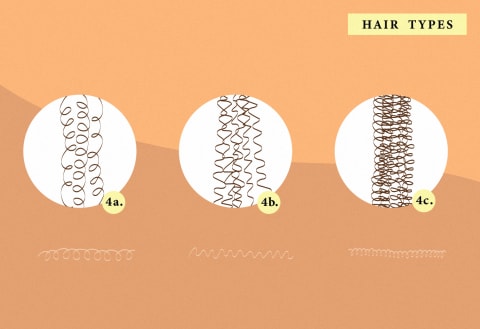This is all to say that the unique combinations and varieties that make up your hair play a role in your day-to-day maintenance. And the most important thing you can do for your own special strands is to get to know yourself a bit better. Knowledge is power, after all. So as a rundown of the types themselves: Type 1 is straight, with the variance usually coming to how flat your hair lies. Type 2 is wavy, with the major differences depending on how loose the S-pattern is. Type 3 is curly, which changes depending on how tight the curl is. And Type 4 is kinky or coily, which changes depending on whether the shape of the pattern is more zigzag or spring-like. But ultimately identifying your hair type comes down to visual traits—what you see is what you get. So you need to make sure you’re getting the most accurate look at your hair possible. Give yourself the air-dry test: Simply air dry with no added product and see what your hair wants to do naturally. Additionally, you’ll often find that most people have a few patterns to deal with or a patch or two that doesn’t seem to fit in with the rest. So you might have to do different techniques for different areas to make it all uniform. (Or embrace the unique textures!) And there are other factors at play: hair porosity, density, and strand thickness. Essentially you’ve just got to get to know yourself. Ultimately: “I cannot stress studying your hair enough. A stylist can only give you recommendations, but essentially you go home with your hair,” says Danielle Malary, owner of Lumiere Vive Salon. “Feel your hair out, document how it reacts. Essentially, keep a journal for your hair and learn to love it.”



